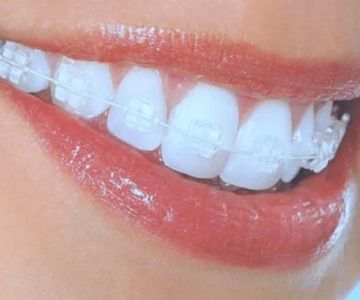Managing Discomfort During Orthodontic Treatment: Effective Pain Management Strategies
Orthodontic treatments, like braces and aligners, are essential for correcting misaligned teeth and bite patterns, contributing to both improved oral health and enhanced aesthetics. However, the path to a perfect smile often comes with its own set of challenges, primarily discomfort and pain. As more Americans seek orthodontic care, understanding and managing this discomfort is crucial for patient satisfaction and treatment adherence. This article explores the most effective pain management techniques to ensure a smoother orthodontic journey.
Understanding the Causes of Orthodontic Discomfort
Orthodontic treatments apply continuous pressure to teeth to facilitate movement, which can lead to soreness and discomfort. This discomfort typically arises from adjustments to braces or the insertion of new aligners. According to the American Association of Orthodontists, about 70% of orthodontic patients experience significant discomfort during the initial days following an adjustment.
Pressure from braces or aligners affects periodontal tissue and bones that hold the teeth in place. This pressure is necessary for tooth movement but may cause inflammation, resulting in pain. Studies indicate that this discomfort usually peaks within the first 24 to 48 hours post-adjustment and gradually subsides over a week.
Topical Analgesics and Over-the-Counter Pain Relief
One of the simplest ways to manage orthodontic pain is through the use of over-the-counter (OTC) analgesics. Medications such as ibuprofen or acetaminophen can significantly reduce discomfort without the need for a prescription. A study published by the American Journal of Orthodontics and Dentofacial Orthopedics found that 80% of orthodontic patients reported pain relief when using OTC pain relievers.
Topical analgesics, such as numbing gels, can be directly applied to the gums and sensitive areas to alleviate discomfort. Brands like Orajel and Anbesol are popular choices among orthodontic patients in the U.S. These gels provide temporary relief and are particularly effective during the initial adjustment period.
Orthodontic Wax: A Shield Against Irritation
Braces can sometimes irritate the inner cheeks, lips, and tongue. Orthodontic wax serves as a protective barrier between metal components and soft tissues. This wax is readily available in drugstores and can be applied over brackets and wires to minimize friction and irritation. It provides immediate relief by smoothing sharp edges, thus preventing cuts and sores.
Research emphasizes the importance of orthodontic wax in improving patient comfort, with nearly all orthodontists recommending it for patients experiencing soft tissue irritation. Proper use of orthodontic wax can significantly enhance the treatment experience.
Adapting to Dietary Changes for Pain Management
During orthodontic treatment, certain dietary changes can help manage discomfort. Patients are advised to consume softer foods, especially after adjustments when teeth are most sensitive. Foods like soups, smoothies, mashed potatoes, and yogurt are gentle on the teeth and can prevent exacerbating soreness.
Additionally, avoiding hard, sticky, or chewy foods can prevent damage to orthodontic appliances and protect sensitive teeth from pain. According to a survey by the Dental Health Magazine, 85% of orthodontic patients who adapted their diet reported less discomfort.
Warm Salt Water Rinses for Natural Relief
Warm salt water rinses are a time-tested remedy for oral discomfort. Salt acts as a natural disinfectant that reduces swelling and promotes healing. For orthodontic patients, rinsing four to five times a day with a salt solution can reduce pain and prevent infections in areas irritated by braces.
This method is not only effective but also cost-efficient. Dr. Emily Clark, a renowned orthodontist in California, advocates for this practice, noting its benefits in soothing irritated gums and accelerating recovery from minor oral injuries.
Concluding Thoughts: Personalizing Pain Management
The journey through orthodontic treatment need not be marred by discomfort. By understanding the causes of pain and utilizing appropriate management techniques, patients can significantly improve their treatment experience. It's essential to personalize pain management strategies, whether through medication, dietary adjustments, or other methods, to suit individual needs.
Ultimately, effective communication with your orthodontist is vital. Discussing pain levels and treatment options ensures that patients receive the best care possible. For more tips on orthodontic care, explore our resources at Dentistry Toothtruth. Taking proactive steps in managing discomfort not only enhances the orthodontic experience but also contributes to successful treatment outcomes.




 Westgate Dental Arts
Westgate Dental Arts Coventry Family Dental
Coventry Family Dental Familia Dental
Familia Dental Dr. Daniel S. Fife, DDS
Dr. Daniel S. Fife, DDS Dentistry At Suburban Square: Michael I. Wollock, DMD
Dentistry At Suburban Square: Michael I. Wollock, DMD Comfort Care Dental
Comfort Care Dental The Importance of Oral Health Education During Pregnancy for a Healthy Pregnancy
The Importance of Oral Health Education During Pregnancy for a Healthy Pregnancy Why Skipping Dental Checkups Can Lead to Bigger Oral Health Problems
Why Skipping Dental Checkups Can Lead to Bigger Oral Health Problems Best Tips for Brushing Your Teeth Properly for Healthy Gums: Essential Techniques for Oral Health
Best Tips for Brushing Your Teeth Properly for Healthy Gums: Essential Techniques for Oral Health Advantages of Porcelain Dental Restorations
Advantages of Porcelain Dental Restorations How Can Diabetes Cause Tooth and Gum Problems? Preventing and Managing Oral Health Issues
How Can Diabetes Cause Tooth and Gum Problems? Preventing and Managing Oral Health Issues Healthy Habits for Promoting Good Oral Health and Hygiene: Tips for a Healthy Smile
Healthy Habits for Promoting Good Oral Health and Hygiene: Tips for a Healthy Smile